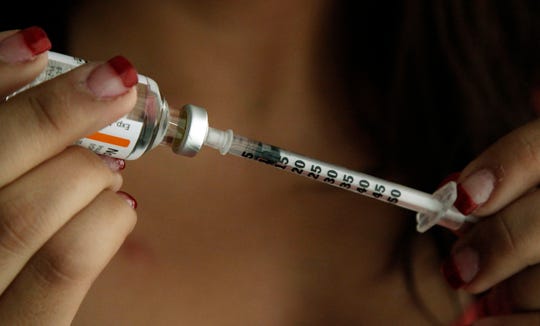By:
Just before the start of Memorial Day weekend, Meg Green meticulously followed online instructions for hacking an insulin pump.
Why? To make the small, computerized device smarter by giving it the capability to adjust itself, acting as an artificial external pancreas.
The hack worked, unlocking a world free of the constant blood sugar monitoring and insulin adjusting that became routine for the 26-year-old with Type 1 diabetes.
"I went out for drinks, and the pump automatically knew how much insulin to give me. I was stable all night,” Green said about the jailbroken device. "It was amazing, I just wanted to cry."
Diabetes treatment has come a long way over the past few years as technology has evolved.
The professional medical community has developed gadgets equipped with sensors and wireless connectivity that can track blood sugar levels. There’s tech that remotely connects patients with health care providers and even wearables that can deliver medication into the body.
As some people invest in the latest advancements to help them cope with the disease, others have found unconventional ways to manage blood sugar conditions like hacking into insulin pumps.
Hacking
Three separate technologies – including a continuous blood glucose monitor, an insulin pump and a computerized control system – have been used for decades to help people with diabetes manually manage their health.
However, in recent years, a loose network of "aggressive patients" began exploiting a security flaw in some of the pumps to make them automatically estimate blood glucose levels and adjust insulin levels accordingly, according to Dr. Irl B. Hirsch, a professor of medicine at the University of Washington Medical Center.
"We’ve seen hacking in politics, and now we're seeing it in medicines," Hirsch said.
The endocrinologist said that thousands of people with diabetes are breaking into the medical devices because they "don’t want to wait for the FDA to approve something from the usual stream of regulation."
He said the hacked pumps give users "smoother glucose levels than we can get right now with the approved devices."
Glucose is the type of sugar you get from foods, and insulin helps keeps your blood sugar level from getting too high (hyperglycemia). Diabetes inhibits the body's ability to produce or manage insulin appropriately, causing glucose to build up.

Dana Lewis, an Alabama native, is one of the pioneers in the field of DIY insulin pumping.
In 2014, she used a custom program to unlock the real-time blood sugar readings from her insulin pump and created an algorithm that can predict what her blood sugar is going to be in the future. She then met with Ben West, who is one of the key hackers behind the artificial pancreas movement, and "a light bulb went off," Lewis said.
She posted the code online, calling it OpenAPS, and made it widely available to anyone who wanted to unlock their insulin pumps. OpenAPS is an acronym for open artificial pancreas system.
"I wanted to share my solution with other people. From the beginning, it was a patient-driven movement of people who say, 'I want to have choices.'" Lewis said. "This was all about how do we fill the gap until there’s something commercially available."

